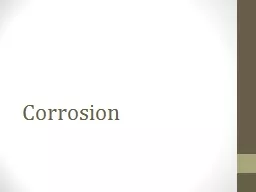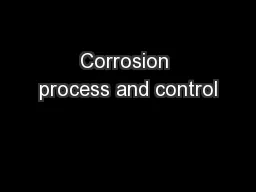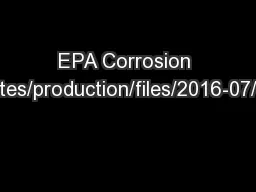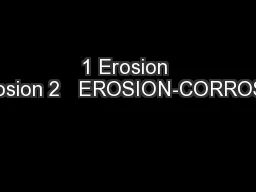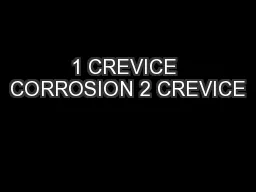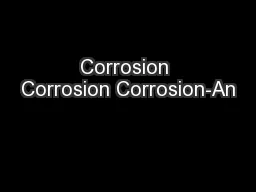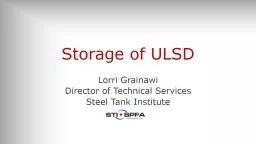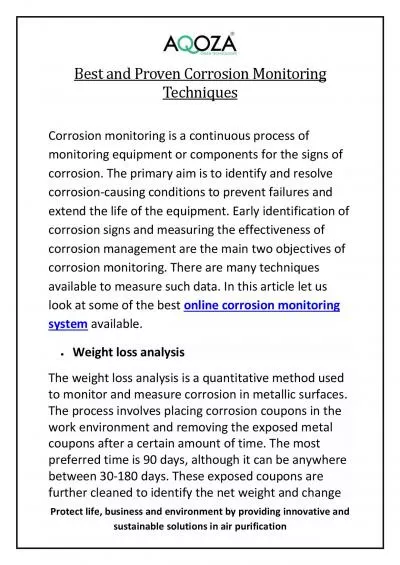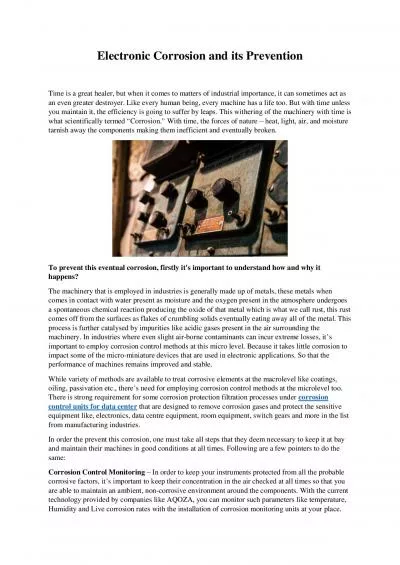PPT-Corrosion Corrosion Corrosion-An
Author : debby-jeon | Published Date : 2020-04-06
oxidization of a metal and the oxide flaking off Oxidized metal is commonly called rust Most commonly oxygen will oxidize a metal Either by Metal O 2 MetalO
Presentation Embed Code
Download Presentation
Download Presentation The PPT/PDF document " Corrosion Corrosion Corrosion-An " is the property of its rightful owner. Permission is granted to download and print the materials on this website for personal, non-commercial use only, and to display it on your personal computer provided you do not modify the materials and that you retain all copyright notices contained in the materials. By downloading content from our website, you accept the terms of this agreement.
Corrosion Corrosion Corrosion-An : Transcript
Download Rules Of Document
" Corrosion Corrosion Corrosion-An "The content belongs to its owner. You may download and print it for personal use, without modification, and keep all copyright notices. By downloading, you agree to these terms.
Related Documents

